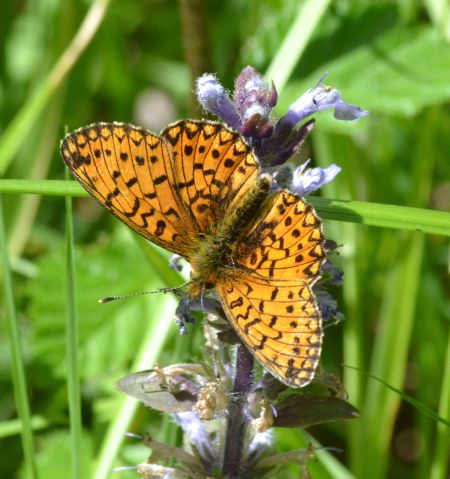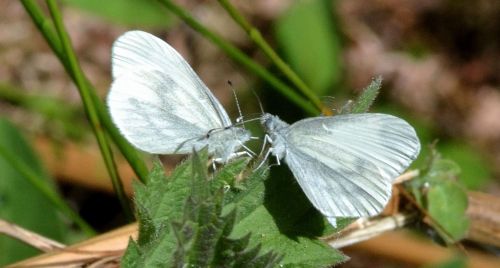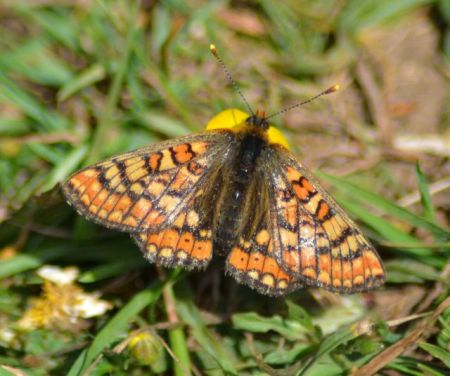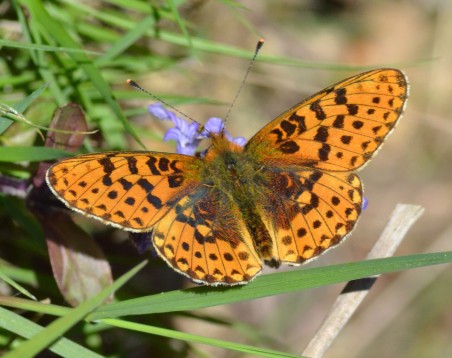Observing oft-recorded British butterflies in new places has been one theme of this most unusual spring of 2020, but on its final day my going back to where it all began for one very special species proved to be even more satisfying. Overnight I had learned that Black Hairstreak were now flying in a particular place to the north of Oxford. So I contacted Ewan who had already checked our own recent location of choice twice this season where none had yet emerged, and we met at the second site just before 9:30am.
When I joined Butterfly Conservation in 2010 and participated in various field trips, today’s location was an acknowledged hot spot for a butterfly that is one of Great Britain’s most threatened and hence sought after in equal measure. The group leader explained how an issue had arisen there with egg collection and that if participants were to return in the autumn we might likely come across a degree of trimming of the Blackthorn food plant hedges.
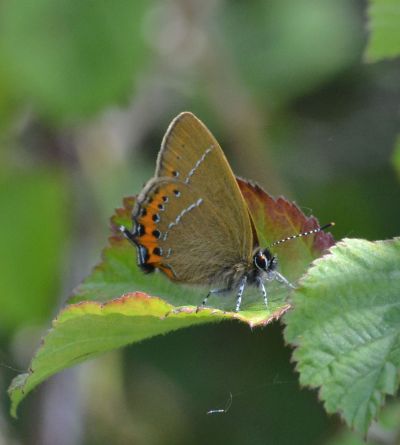
Black Hairstreak
This particular colony indeed declined over the ensuing years, during which the centre of attention for Black Hairstreak and its attendant, social media-inspired circus moved first to the M40 Compensation Area of Bernwood Forest, then Whitecross Green Wood in Oxfordshire. Most recently another population, close to a long-standing stronghold that had been put off limits to genuine butterfly enthusiasts by HS2 construction works, came under the same visitor pressure with habitat being roundly trashed once again. But no matter where else I went for this particular record, I made a point of still checking today’s site, mostly finding no more than a few individuals and in some years none at all.
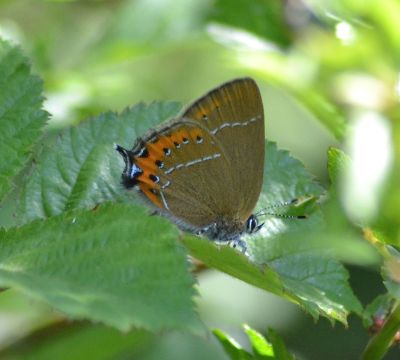
Black Hairstreak
All this harassment of an endangered species and habitat pressurisation progressed with the apparent blessing of conservation charities, as they persisted with the folly of prioritising hands in new members’ pockets over servicing their core interest groups and support, as all now seem to do. So perhaps no wildlife species symbolises that ongoing misplacement of loyalties better than the Black Hairstreak butterfly.
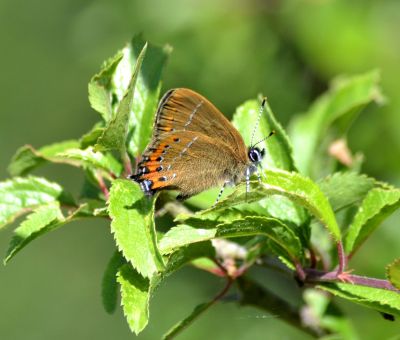
Black Hairstreak
Today we found a cluster of up to a dozen Black Hairstreak at the same spot I had first visited on a BC field outing 10 years previously. These were mostly keeping near the tops of the Blackthorn hedges since there were no flowering wild plants such as Bramble or Privet to bring them lower and so offer the kind of point blank communion we had enjoyed at other sites in recent years. But every so often an individual would indeed pose agreeably enough for acceptable pictures to be obtained.
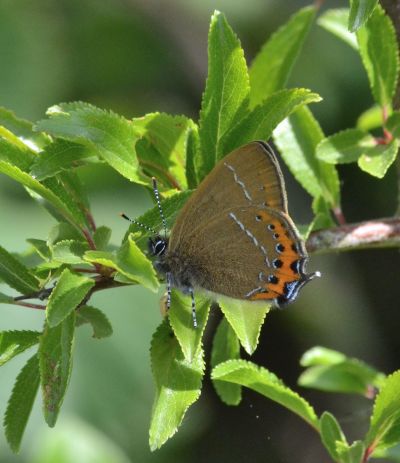
Black Hairstreak
I do not really need more images of any previously recorded British butterfly in this current season, having an extensive collection already. But being unable like everyone else at present to travel abroad and widen my butterfly experience I must be content with repeat exercises such as this. My policy is to get in and out early where Black Hairstreak is concerned, before the circus arrives back in town.
Having recorded the species for 2020 and gained the studies presented in this post, some of which do seem a little evolved from those of other years, I now feel less need to visit other sites. That things have turned full circle for Black Hairstreak in a former stronghold where it appears to be thriving once more is especially gladdening. And so I intend to leave this most beleaguered of our butterflies in peace to see out it’s brief June flight season free from my own further attentions.

